© 2024 Neurofeedback Luxembourg (Servicium SA)
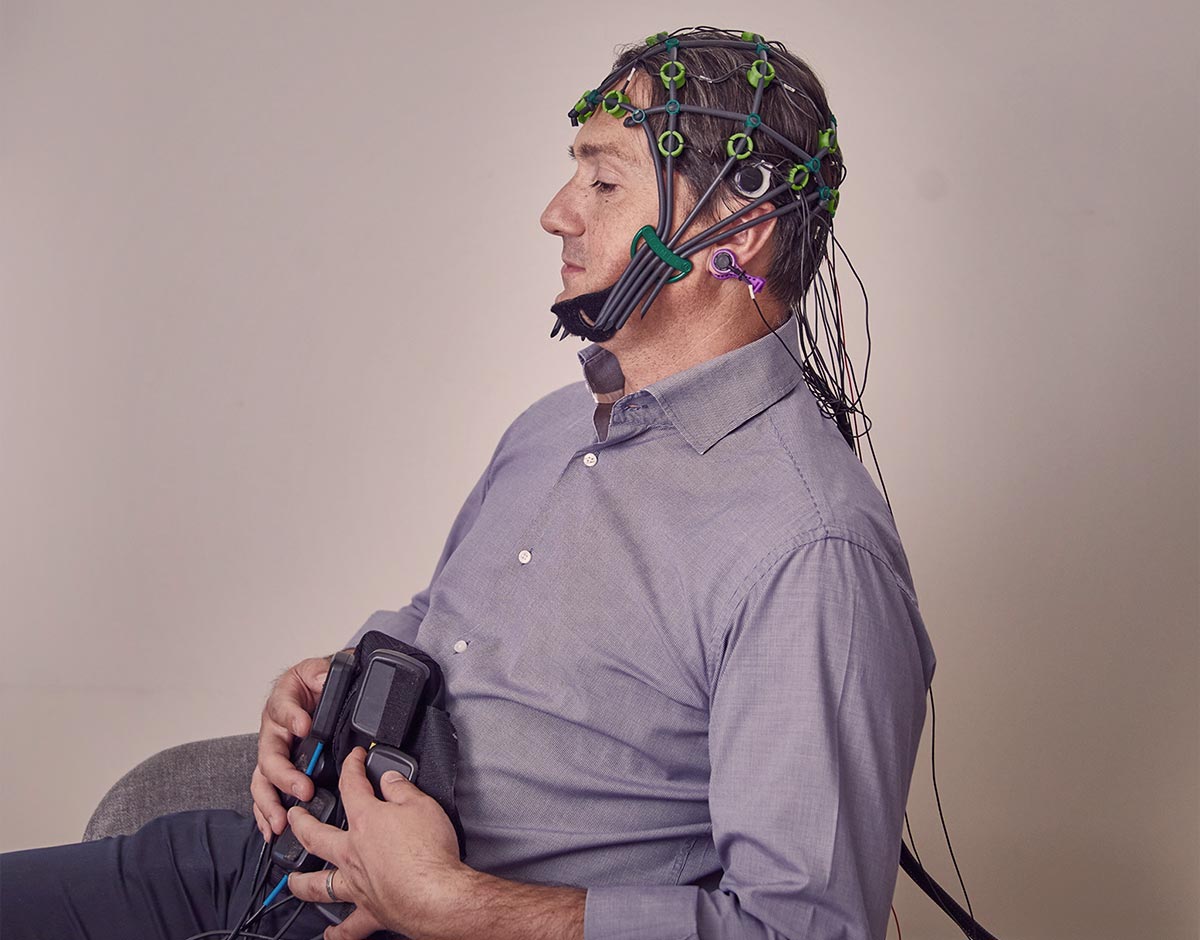
Home » Neuromodulation
Neuromodulation or neuromostimulation at Neurofeedback Luxembourg is non-invasive, painless and risk-free.
Our training and experience have led us to combine different tools in a very specific way. Thus, our unique practice allows for personalized, efficient services with quick and solid results over the long term.
Neuromodulation is always used prior to neurofeedback sessions, you will likely encounter these different devices during your treatment. They allow stimulation of the vagus nerve (parasympathetic system), the brain and also the body (often on the intestines).
See the relevant page for more information about Neurofeedback and how a session works →
Electrical stimulation of the brain, sometimes called electrotherapy or electrostimulation, refers to the use of electricity for therapeutic purposes. The principle consists of applying low-power electrical currents. It is painless and non-invasive. Electrodes are placed on the surface of the skin (a positive anode and a negative cathode). The position of the electrodes determines how the current flows to specific areas of the brain.
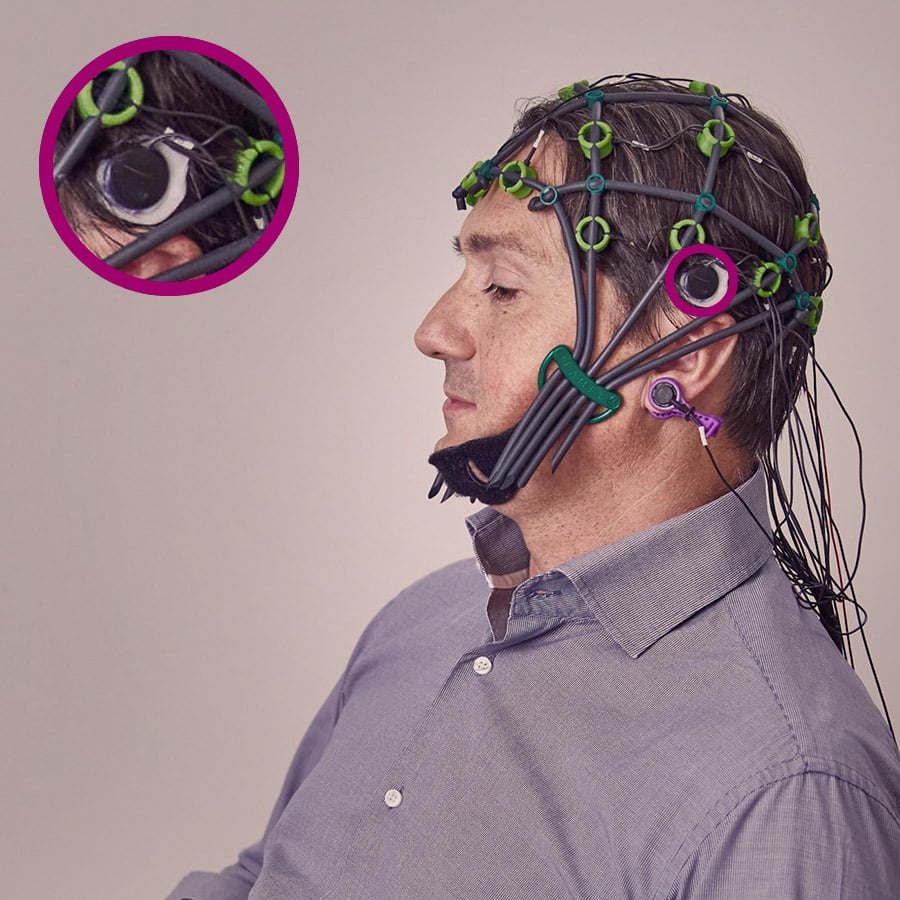
Transcranial direct current stimulation (tDCS) does not produce any adverse effects and is diffused, allowing a larger area to be stimulated. It is a direct current of low intensity, up to 2 mA (well below the level of a 9V battery), delivered through electrodes placed on the cerebral cortex. It produces immediate and lasting changes in brain function.
Transcranial alternating current stimulation (tACS) applies a low-intensity sinusoidal electrical current to the brain through electrodes placed on the scalp. It is adjusted to match the frequencies naturally produced by the brain to improve brain function.
Transcranial Random Noise Stimulation (tRNS) is an electrical stimulation with a range of random frequencies that has the ability to increase cortical flexibility.
The pEMF (pulsed electromagnetic field) stimulation is a weak magnetic stimulation that can be done on the brain, the intestines or the rest of the body (in case of inflammation, pain…). It is non-invasive and much weaker than the radiation of our current cell phones.
Approved on the market by the FDA (Food and Drug Administration) since 2007 because it is not dangerous, it works with the natural magnetic field of our body and allows the recovery of the body at the cellular level.
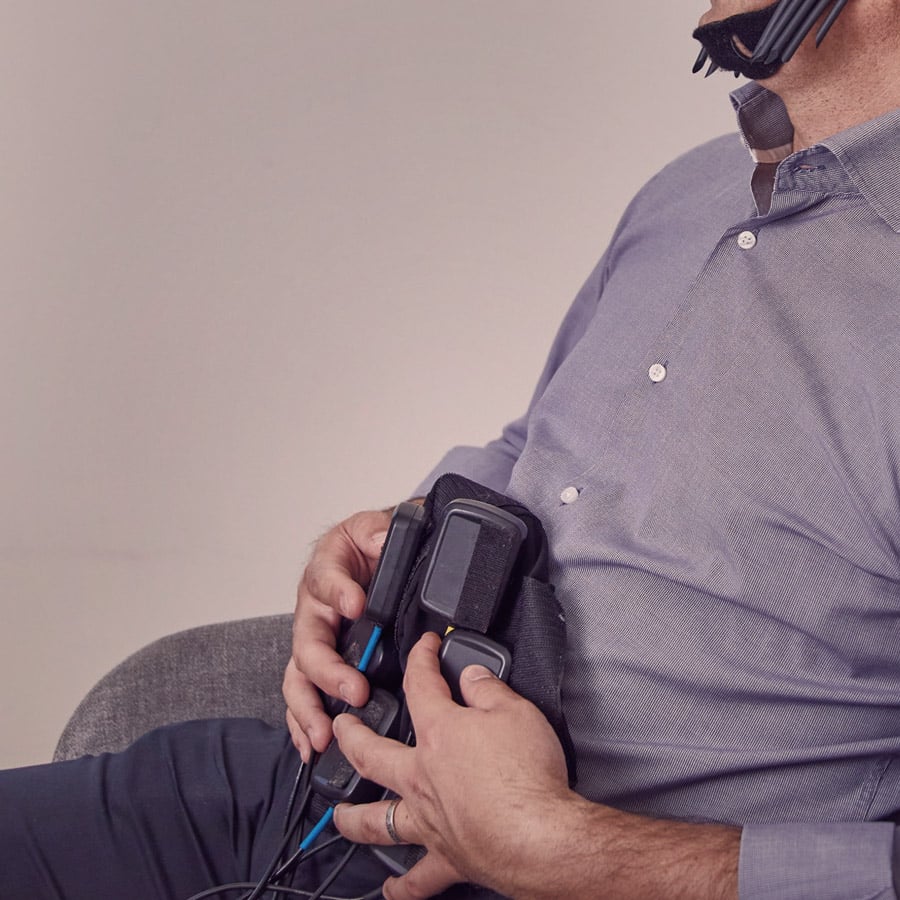
Formerly called low-level light therapy (LLLT), it is now called photobiomodulation (PBM). It is already used in the cosmetic and beauty field for the reduction of wrinkles or scars for many years.
The devices we use are made of LEDs (not laser). They allow to apply a non-invasive, low intensity and non-thermal light. The light is generally in the visible red spectrum.
The effect of PBM is more similar to photosynthesis in plants. The light is absorbed by the cells and causes a biological cascade: it releases ATP (adenosine tryphosphate) in the cell, inducing the neuroplasticity stage. This gives it multiple effects at different levels (anti inflammatory, anti oxidative, regenerative, neuroprotective…).
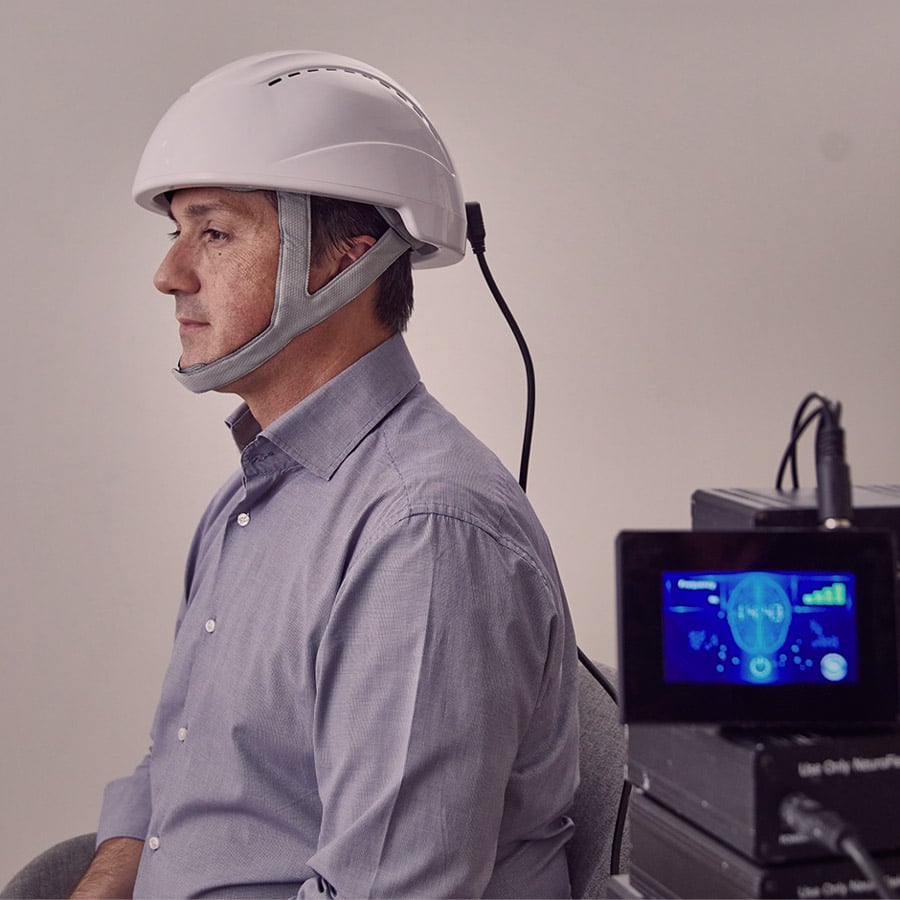
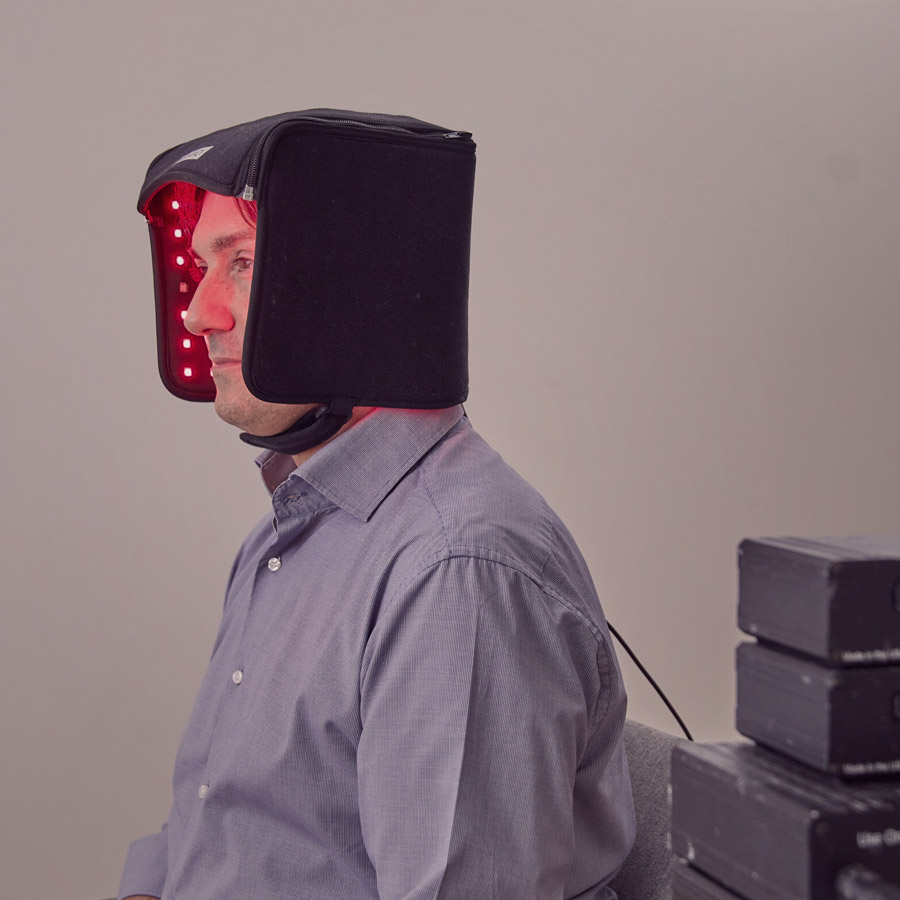
See the relevant page for more information on Photobiomodulation →
The Safe & Sound Protocol (SSP) is a non-invasive auditory stimulation, allowing the regulation of the nervous system. It is suitable for children and adults and provides many benefits to those suffering from trauma, anxiety, sleep disorders, sensory processing difficulties, and more (ADHD, Autism...). This protocol is based on the polyvagal theory (or "the science of feeling safe" by Dr. Stephen Porges). It stimulates the vagus nerve to reset the nervous system and bring it back to safety via specially filtered music. It can be done remotely, from your home. Contact us for more information.
Audio Visual Training (AVT) is a non-invasive way of applying light pulses at specific frequencies using eyeglasses. The goal is to guide the brain to targeted brain states in a safe and gentle manner. Helping the brain to modulate its frequencies helps improve mood, sleep and facilitates the ability to relax. AVE also improves brain health by increasing cerebral blood flow and stimulating beneficial neurotransmitters such as serotonin, norepinephrine and endorphins. The advantage is that there is no discomfort, especially for people with anxiety, high sensitivity or children.
There are other types of stimulation that we do not perform on our premises.
Repetitive Transcranial Magnetic Stimulation is mainly used in the diagnosis and treatment of certain psychiatric and neurological disorders, but it also allows scientific investigations in neuroscience.
It consists of emitting a series of magnetic impulses on the brain through the skull by means of a coil. The variation of the magnetic flux induces an electric field that modifies the activity of the neurons. This permanently modifies the activity of the targeted region.
Electroconvulsive therapy (ECT) or electroshock treatment, formerly called seismotherapy, is a method of electrotherapy used in psychiatry.
It consists of delivering an electric current to the scalp and is always done under general anesthesia because it triggers a grand mal seizure. The aim is to treat people with certain psychiatric illnesses (severe depression, resistant to treatment).
Microcurrent Electrical Neuromuscular Stimulation (MENS) allows the application of a very low intensity electrical current for the treatment of pain, inflammation or nerve disorders.
Unlike other types of stimulation, microcurrents do not stimulate the sensory nerves, so no electrical sensation is felt during treatment.
This stimulation relieves pain and relaxes the muscles thanks to a battery-operated device connected to electrodes placed on the skin via gel-coated electrodes.
It involves the use of a light electric current at low or high frequency (less than 10 Hz to more than 50 Hz).
Why do we couple stimulation with Neurofeedback sessions?
Neurofeedback training enables learning and change through neuroplasticity and conditioning. Stimulation amplifies these phenomena: the session is easier because the brain learns faster and more easily. It is in a plastic situation ready to change. Moreover, stimulation allows for longer, more effective sessions with no side effects: 1 + 1 = 3!

Stimulating the brain with a specific frequency helps it to enter a desired state
Neurofeedback Luxembourg is one of the few companies that put these tools together to achieve fast and stable results over the long term. This allows us to meet the needs of many people:
| 1. Learning & developmental disabilities | 2. Stress & emotional disorders |
Attention Deficit Disorder with or without Hyperactivity (ADHD) & Oppositional Disorder Developmental and learning disorders (Dyslexia, dyspraxia, dyscalculia,…) Autism & Asperger’s (ASD) High Intellectual Potential (HPI) & Hypersensitivity | Anxiety & panic attacks Depression & loss of motivation Psychological trauma (TPSD) Sleep Disorders & Insomnia Obsessive Compulsive Disorder (OCD) & Tics |
| 3. Instability & brain alteration | 4. Performances & optimisation |
Epilepsy & Absences Migraine & Headaches Neurodegenerative diseases (Dementia: Alzheimer, Parkinson…) Head trauma & Stroke | Burn-out, Bore-out & Loss of meaning Improvement of Mental Performance Improvement of Sports Performance Increased resilience |
Neurofeedback has many applications
Note: and yes, neuromodulation is also possible for people suffering from epilepsy. When practiced according to the principles of stimulation, it reduces the severity of seizures and their frequency. This was the first application of neurofeedback.
It is this innate process that makes Neurofeedback possible and effective.
Neuroplasticity, also called brain or neuronal plasticity, describes the brain’s ability to adapt and modify itself as needed. These modifications take place during the phenomenon of neurogenesis (= formation of a functional neuron).
Also called neuronal or cerebral plasticity, this concept emerged in 1848 with the famous patient Phineas Gage. Developed by Santiago Ramón y Cajal in 1906, it was not accepted by the scientific community until 1970.
Plasticity is possible as early as the embryonic phase (= development of the human embryo, from fertilization to the fourth week of development), during learning or brain damage. We all have the capacity to create, undo and reorganize our neural networks and the connections between these neurons, from our birth until our death. This is why we speak of a plastic brain, because it is malleable, like a muscle, and shapes itself according to our experiences and learning.
Plasticity is the ability of a material to change its shape under the effect of a physical action, and to maintain its shape even after the action has stopped.
In the field of neurobiology, this term refers to any modification of a property or a state following a change in the environment. Neuroplasticity is therefore involved in any learning process, whether it is motor, language or creative… Thus, it is possible to learn to play the piano at age 30, gymnastics at age 52 or Chinese at age 75.
This process is also visible after a stroke or a head injury: in case of bleeding in the brain or a violent blow, neurons die and some functions may “disappear” (walking problems, inability to speak, etc.). In reality, the brain is able to use other areas of the cortex to replace these functions allowing the person to recover abilities.
Talk to a specialist over the phone to determine together the solution that best suits your needs and budget.
Free call with no obligation.
We are not doctors or psychiatrists. Therefore, we do not diagnose, we do not prescribe medication, we do not cure illnesses and we are not an emergency center. We often help people reduce or even stop their medication in agreement with the health professional who follows you. Please note that you do not need a prescription or a diagnosis to make an appointment at Neurofeedback Luxembourg.